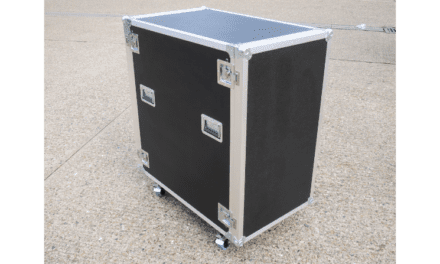Meeting net zero: how the manufacturing industry can help
Peter Ross, founder and MD of CP Cases, provides his insight into what manufacturers can do to cut emissions and meet the 2050 net zero targets.
The UK government’s net zero target aims to reduce the country’s greenhouse gas emissions by 100% from 1990 levels – by 2050. However, in a new report, the government has admitted that the new strategy could fail to meet the legally enforceable targets. The government’s recently released Powering Up Britain policy showed revised calculations that they would only deliver 92% of the emission reductions needed to meet the UK’s 2030 goal.
With the importance of meeting net zero targets becoming very apparent if we’re to make a significant change, it’s time for many industries to help reduce their own emissions. One of those industries is manufacturing. As part of the net zero targets, the government aims to cut emissions from manufacturing by about two-thirds by 2035. To help make these changes, the government is providing £160 million to update manufacturing infrastructure.
Whilst structural changes and improved energy efficiency in the UK’s manufacturing sector have helped to halve industry emissions since 1990, the pace has begun to slow.
As it stands, the manufacturing and refining sector produces 15% of the UK’s CO2 emissions. Peter Ross – founder and MD of bespoke protective equipment cases company CP Cases – shares some insights into how manufacturing can help to reach those net zero targets.
How the manufacturing industry can help reach net zero
The government’s net zero plans are extremely ambitious, with revisions already underway. With £34.8m being allocated to help energy-intensive industries decarbonise, critics say there is still more that can be done. Here are three key areas where manufacturers can decarbonise:
Onshore manufacturing
Onshoring is the sourcing and production of goods from the company’s origin country. Whilst many companies look to offshore their manufacturing to save money, several benefits come with onshore manufacturing.
During the Covid-19 pandemic, the need for a secure supply chain that’s both resilient and agile became clear. By manufacturing in your home country, you face much shorter lead times, cutting delays due to global shipping waits and customs clearance. The lack of reliance on volatile markets that can face global disruptions puts companies in a great position to adapt to change.
Another key benefit to onshore manufacturing is the sustainability of eliminating global supplies. This reduces the environmental impact of manufacturing as the distance between suppliers and their final points of arrival has been decreased. By reducing our emissions and manufacturing closer to home, we can get closer to winning the battle for net zero.
Circular manufacturing
Circular manufacturing focuses on remanufacturing existing products to extend the product’s life, preventing excess waste and consumption. The product can then continue to be used by the existing customer or sold to a new customer. By using this model, you’re also further encouraging onshore manufacturing as customers will send products directly to your company to be remanufactured.
Research from the Ellen MacArthur Foundation claims 45% of CO2 emissions can be tackled by changing the way goods are made and used. Not only does this reduce emissions, but it also provides a competitive advantage as customers can save money through remanufacturing rather than purchasing a brand-new product.
The demand for new materials places a significant strain on the environment, with companies producing more emissions to keep up with demand. Circular manufacturing enables companies to reduce this demand by 50-98%. What’s more, the energy required to remanufacture products is often up to 90% less than when manufacturing from scratch with raw materials.
Lean manufacturing
Lean manufacturing was developed by Toyota, who wanted to streamline their production processes by reducing waste and increasing productivity. The idea of lean manufacturing focuses on cutting unnecessary transportation (remaining onshore), reducing inventory, overproduction, and excess processes. Lean manufacturing is essential, as, with the growing global supply chain, opportunities for warehouse waste are higher than ever. By focusing on stripping back production processes, we can not only save money but also reduce emissions, getting closer to those net-zero targets.
At CP Cases, the protective equipment cases for transit & storage feature foam inserts. To reduce waste, we’ve signed an agreement with Ramfoam for them to collect foam waste free of charge. This will greatly decrease foam waste going to landfills, by perhaps 90%. The waste foam is then sent to Finland, where it is ground up and used as a base layer on 5G football pitches. Even small changes like this can significantly reduce waste going into landfills, helping to further cut those emissions.
Whilst the road to net zero is long, manufacturers can all make small changes to greatly reduce emissions and contribute to the government’s targets. Not only will targets be met, but companies can position themselves above competitors, as better placed to transition into a greener future.
About Peter Ross
Peter Ross is the founder and MD of CP Cases – a leading manufacturer of specialised protective cases and covers for broadcast applications.
About CP Cases
Amongst the first to market in the 1970s with flight cases for the live music industry, CP Cases now offers the broadest range of products with protective, operational transit cases for defence and security, broadcast and media, medical and scientific, offshore, and many other sectors. CP Cases has over 50 years of expertise in producing cases, 19-inch rack solutions, and bags, CP Cases has an unparalleled range of in-house skills and expertise with rotomoulded plastic, aluminium, laminated plywood, HPP, textiles, and CNC foam machining. CP Cases’ products are available in a wide range of standard sizes, and the UK-based design team can create a custom solution to meet almost any application your product requires.
Meeting net zero: how the manufacturing industry can help
Extra CP Cases information
Onshore manufacturing: CP is a fully in-house manufacturer based in the UK (with a US partner to manufacture for the US market)
Circular manufacturing: Link with the fact we continually have orders for new latches or handles etc which shows the long life cycle of our products
Lean manufacturing: Due to our work being very bespoke, overproduction isn’t really something CP needs to worry about but we are continually innovating into how we can streamline our production with a lot of investment into digitization



